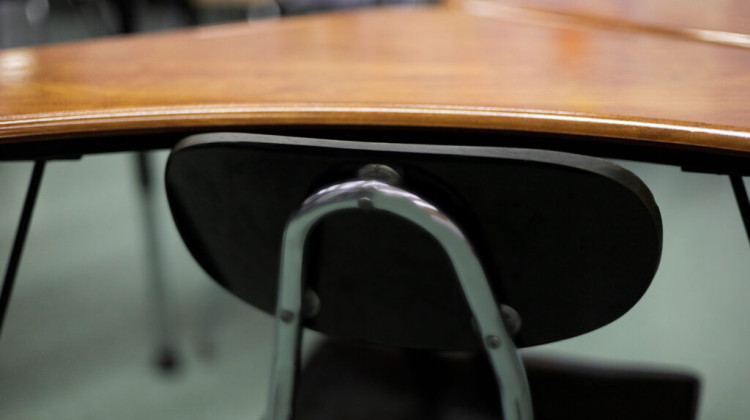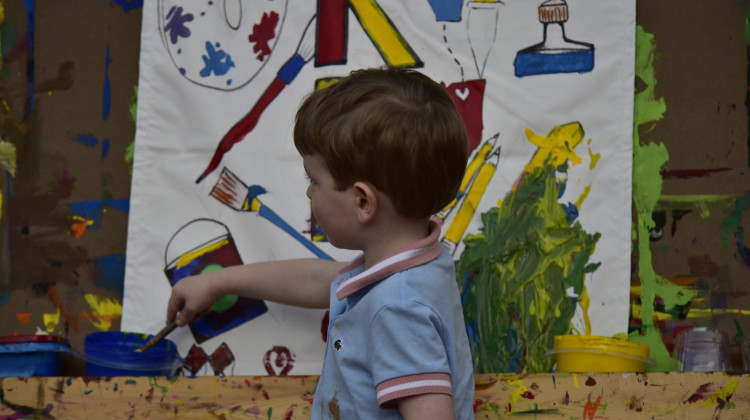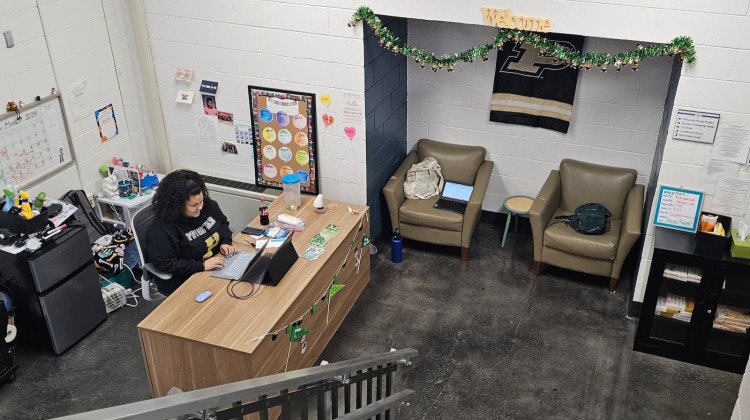
Roughly 221,000 Hoosier students were considered chronically absent during the 2022-23 academic year, according to new data from the Indiana Department of Education.
Getty ImagesAbout 40% of Hoosier students missed 10 or more school days last year, and nearly one in five were absent for at least 18 days, according to new Indiana data.
A presentation before the Indiana State Board of Education (SBOE) on Wednesday highlighted the staggering statistics that state leaders said should warrant immediate action.
Student absences have been on the rise since the onset of the COVID-19 pandemic in Indiana and across the nation, data shows. Although Indiana’s latest numbers show slight improvements, absentee rates during the 2022-23 school year were still 8% higher than before the pandemic.
“It’s October — the first quarter is gone. We have to draw attention to this right now. And there’s no time to wait,” said Indiana Secretary of Education Katie Jenner. “I think this is really a rally cry for us to look at our parents, families, caregivers, and also our community leaders to come up with some solutions that might help.”
Indiana fared better than most other states for chronic absenteeism — defined by the rate of students who missed at least 18 school days, either excused or unexcused. That’s equal to 10% of the academic year.
But in the last three years, the rate of Hoosier students who have been chronically absent more than doubled compared to before the pandemic.
Education experts note that being absent as few as three days out of the school year affects test scores and overall academic performance. The student demographic groups with the largest gaps in state language arts and math testing since the pandemic are more likely to be chronically absent.
Jenner told the Indiana Capital Chronicle this summer that high rates of absenteeism are likely contributing to the state’s dismal literacy rates, for example.
By the numbers
According to the Indiana Department of Education (IDOE), roughly 221,000 Hoosier students were considered chronically absent during the 2022-23 academic year.
More than 400,000 students missed at least 10 days of school — which, per Indiana statute — made them “habitually absent.”
A school day is considered missed if a student is there for less than half of the day.
To put those numbers into perspective, state leaders emphasized that 3,086 school buses could be filled with kids if all of Indiana’s chronically absent students came to school on the same day.
“We’re trying to help people understand that we’re not talking about a small amount of people,” said John Keller, IDOE’s chief information officer. “When you think about it that way, that’s a big number.”
Keller added that Indiana is “far away” from chronic absentee rates in the 2018-19 school year, when just 11.2% met that definition.
The rate rose to 18.5% in 2020-21 — the first year after the pandemic — and topped out at 21.1% in the 2021-22 school year, according to state data.
The 2022-23 data indicates that 19.3% of students were chronically absent from school.
The issue is especially worsening among high schoolers, Keller noted.
State education department officials said the highest chronic absenteeism rates came from the most vulnerable students who were homeless or suffered from displacement, including children in foster care. Housing instability, in addition to mental health challenges, are also driving absentee numbers up, they noted.
Low-income status also increased a student’s likelihood of being chronically absent. A lack of transportation is additionally thought to be contributing to missed days at some schools.
Black students saw the largest percentage of chronic absenteeism of any racial or ethnic group last year. Only White and Asian students had below the state average.
Still, chronic absenteeism was higher in some schools than in others. Kenner said in 84 schools, 50% of students were chronically absent. Another 270 schools recorded one out of every three students as chronically absent, while 547 schools had one in four students.
Statewide, 1,651 Hoosier schools had at least one out of every 10 students marked as chronically absent, according to state data.
Rates were typically highest in high-poverty urban school districts and charter schools, while suburban schools reported lower rates.
Gary Community Schools had the highest chronic absenteeism rate among the state’s public school districts at about 66%.
Chronic absenteeism was higher than 40% in Muncie and South Bend schools and over 30% in Anderson, Richmond, Indianapolis Public Schools and at least two dozen other districts.
Multiple rural districts had high rates, too, including 43.2% in Cannelton, 37.5% in Madison and 32.1% in Medora.
Rates were mostly lower in suburban districts like Carmel Clay — at 8.4% — and in Zionsville, which recorded a 7.3% rate of chronic absenteeism.
How to get more kids in school?
SBOE officials doubled down on Wednesday that absenteeism is a problem without a single solution, though.
To start, Jenner said an “Early Warning Dashboard” is in the works to direct resources to at-risk students. The system will be piloted for some schools this academic year. She said the goal is for the dashboard to be ready for all schools by the start of the 2024-25 school year.
Included in the dashboard — which will be connected to Indiana’s existing GPS dashboard — will be data on attendance, as well as information about which students at risk. Granular data could provide details about absences at the individual classroom and teacher levels, Jenner said.
“The reality is that culture eats policy for breakfast,” Jenner said, adding that while illness and quarantines kept many students home during the pandemic, the slow rebound in attendance suggests missing school has become a new normal. “So, if we have a national culture of chronic absenteeism, we could sit as a board and pass a number of policies today, but the culture is not there.”
Jenner said the state education department also plans to dive deeper into the academic performance statistics of students who are not chronically absent: “I think there’s more information that we need to know, and that will be helpful.”
Board member Pat Mapes said IDOE additionally needs more information from schools to better understand local responses to absenteeism that might or might not already be in the works.
“When you’re not there and present every day, you’re not going to get the same quality of education,” he said.
Another board member, Erika Dilosa, said the pandemic likely created a new — but dangerous — status quo for students and families.
“I feel like what happened with COVID is that a lot of parents saw that their kids didn’t have to actually come into the building, and then a lot of them passed,” Dilosa said. “They felt that maybe they don’t have to be there as often.”
Board member William Durham suggested that new penalties be put in place to compel students back into the classroom. It’s currently up to each Indiana county prosecutor to decide how to enforce truancy laws.
“In my opinion, there has to be a way to hold parents of minors accountable for those students not coming to school — other than they’re sick, or whatever the case may be. I don’t know what can be done about that,” Durham said. “But in my opinion, something has to be done, because in my household growing up, it was not an option.”
Byron Ernest, also on the board, cautioned the state’s education and political leaders to take a closer look at the issue and the various causes before codifying any responses, however.
“The thing that I want to implore us — and any legislators that are looking at this report — is let’s not knee-jerk policy that we think could work, but it won’t,” Ernest said. “We need to make sure that we really study the root causes … and we’ve got to figure this out and really look at it from the complexity that it is.”
 DONATE
DONATE






 View More Programs
View More Programs

 Support WFYI. We can't do it without you.
Support WFYI. We can't do it without you.